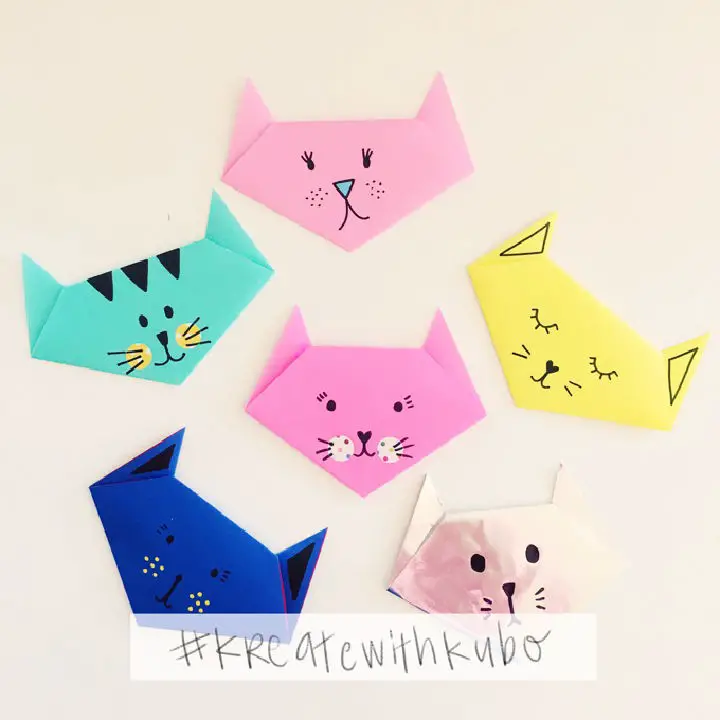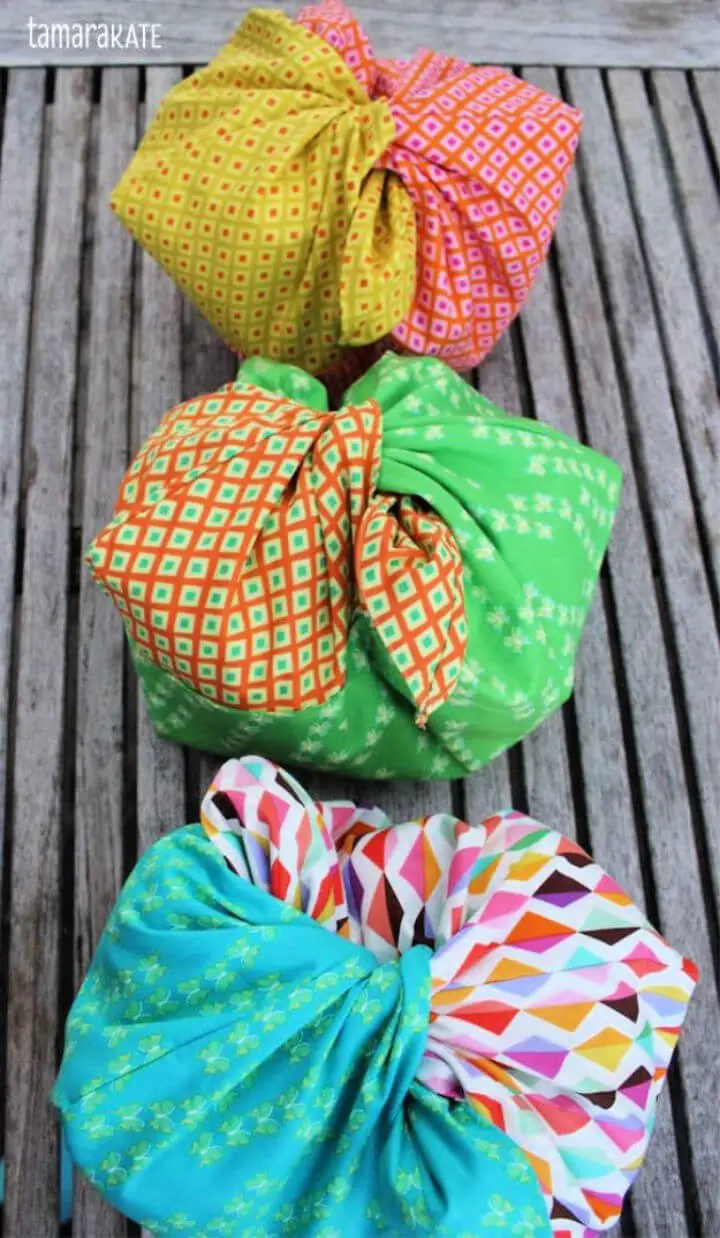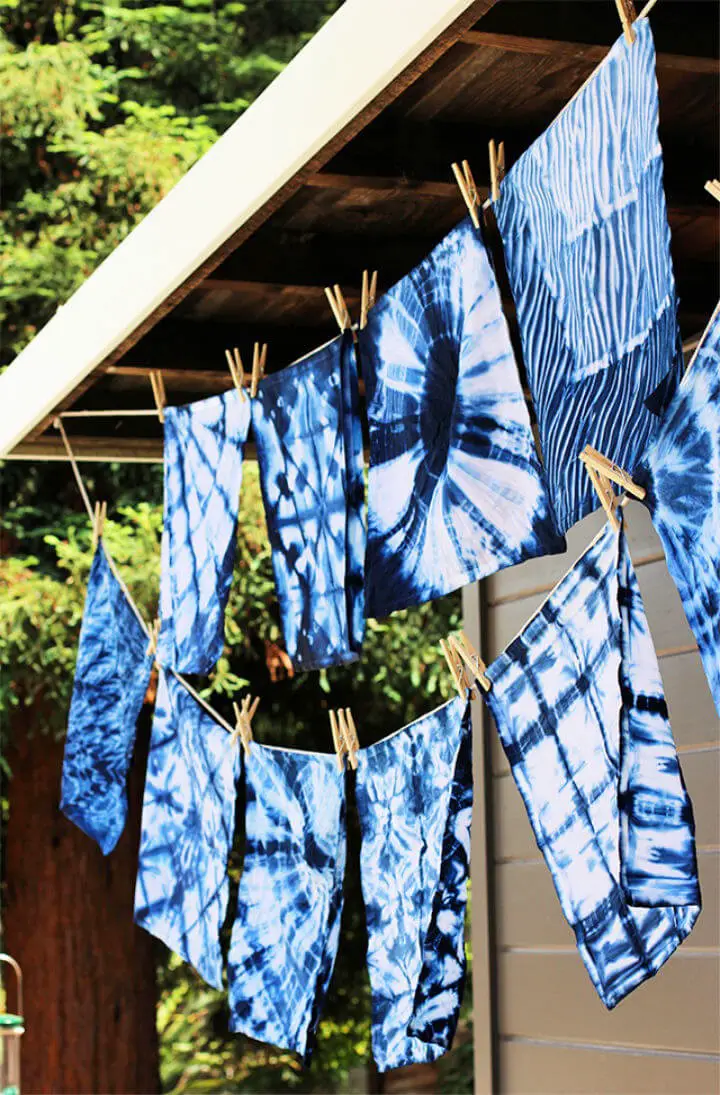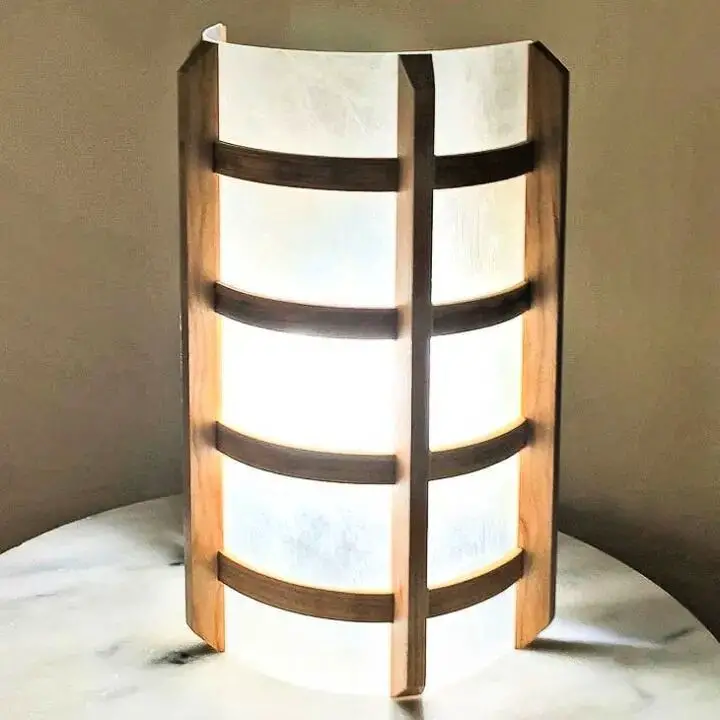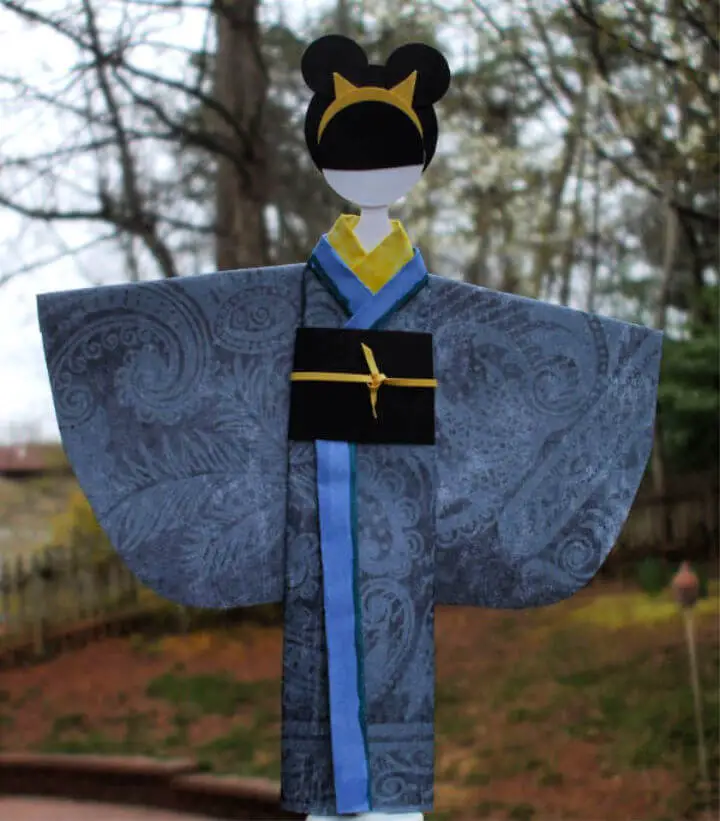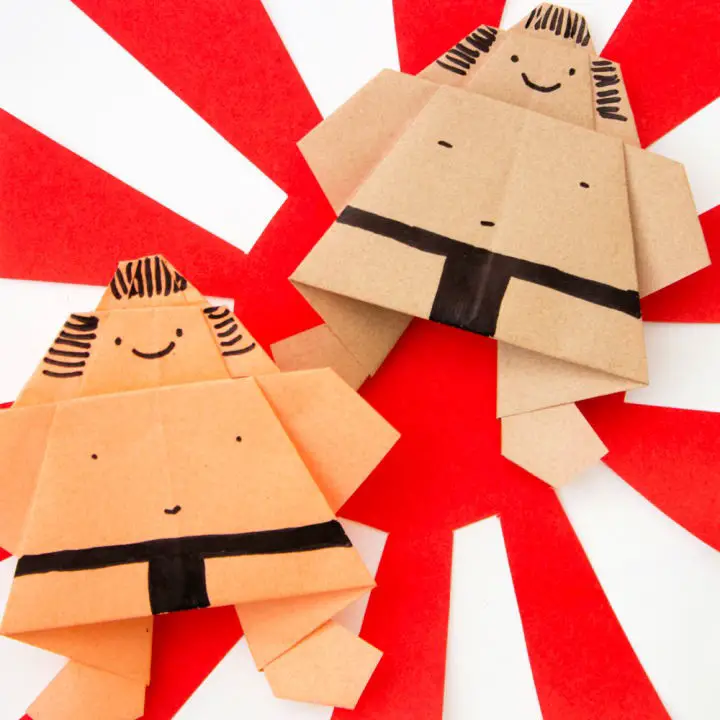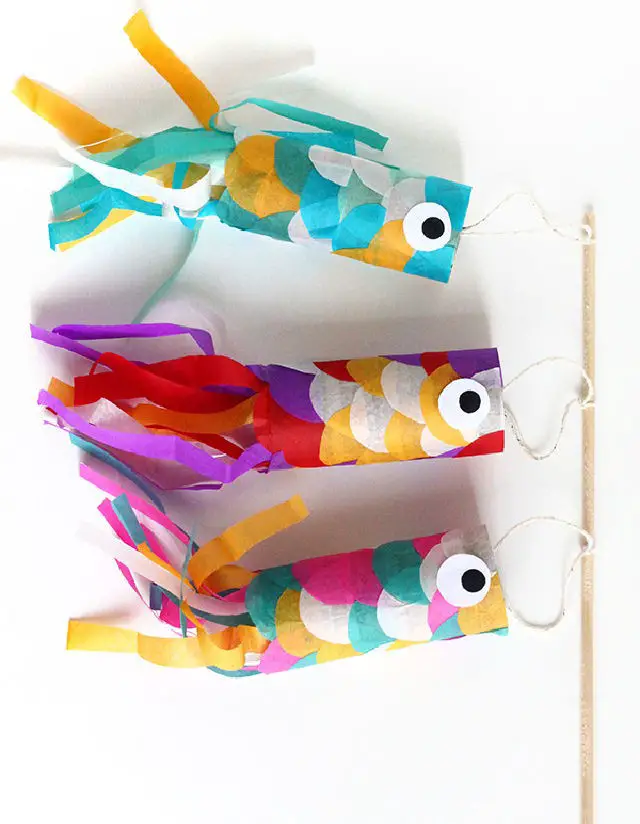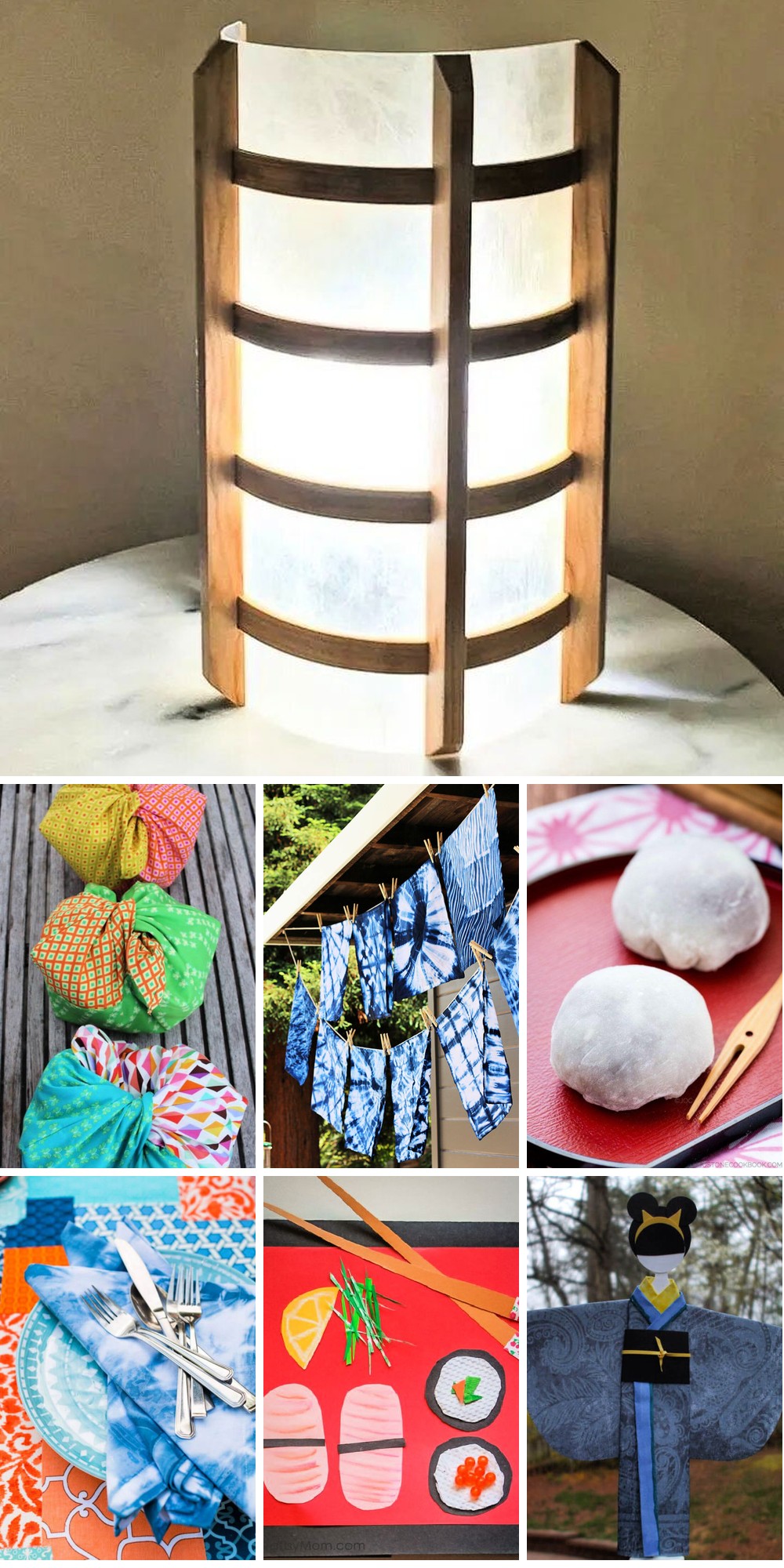
Discovering the art of DIY Japanese crafts is a journey that harmoniously blends cultural significance and beauty. Each intricate detail, from Kintsugi’s golden repair work to Shibori dyeing’s fluid patterns, embodies the country’s profound appreciation for natural imperfections and the cycles of nature. These handmade creations transcend mere decoration, instead serving as tangible connections to a rich tradition that has been revered for centuries. As you embark on this creative adventure, you’ll find yourself drawn into techniques passed down through generations, requiring patience, precision, and a willingness to embrace imperfection. This fusion of past and present offers a unique opportunity to not only create something beautiful but also to honor the cultural heritage that underlies each craft.
Cultural Significance of Japanese Crafts
Japanese crafts, known as Kogei, are an integral part of the country’s cultural heritage, with roots tracing back to the dawn of civilization. The ancient history of these crafts is a testament to the ingenuity and perseverance of artisans who have honed their skills over centuries, meticulously preserving and passing down their knowledge from generation to generation.
The Essence of Japanese Aesthetics
Japanese crafts’ aesthetic principles are shaped by a rich tapestry of influences, encompassing indigenous traditions, the cultural exchange with China, Buddhist philosophies, and later, Western inspirations. While these crafts originally served practical purposes, they eventually evolved into objects of contemplation and decoration, prized for their beauty alone.
Embracing Imperfection: Kintsugi
One of the most powerful expressions of this concept is found in Kintsugi, an ancient Japanese art form that combines broken pottery with lacquer infused with gold. This subtle yet profound craft not only showcases the beauty of imperfection but also underscores the value of embracing life’s inevitable scars. Each delicate repair becomes a testament to the object’s rich history, imbuing it with an otherworldly charm. Similarly, our own imperfections and hardships can be reimagined as opportunities for growth, leading us down a path of self-discovery and wisdom.
Stitching Stories: Sashiko
In a centuries-old tradition, Sashiko – Japanese for ‘little stabs’ – started as a practical means to mend and reinforce clothing. As the technique evolved, artisans began creating intricate designs using white thread on indigo fabric, resulting in unique and beautiful pieces of art. The most well-known pattern is the Asano-ha or hemp leaf, with various other motifs also being crafted. Originally used for utilitarian work clothes, Sashiko has since become a popular decorative element in modern homes, adorning textiles of all kinds.
Shibori: The Art of Dyeing
Shibori, a centuries-old dyeing technique, has been captivating artists globally since the 8th century. By folding, twisting, and binding fabric in intricate ways, Shibori creates unique patterns that showcase its remarkable versatility. This ancient Japanese art form is renowned for its limitless design possibilities, making it an essential part of Japan’s cultural heritage.
Crafts Reflecting Life and Nature
Japanese crafts embody the essence of life and nature, with each piece born from the region’s unique natural resources and seasonal rhythms. The delicate beauty of Sakura-inspired creations captures the spirit of spring, while the vibrant colors of Momiji decorations evoke the warmth of autumn. In this way, traditional Japanese craftsmanship serves as a harmonious fusion of human creativity and the natural world.
Modern Needs and Ancient Techniques
In order to thrive in today’s world, traditional crafts must evolve while honoring their historical roots. Japan provides a fascinating example of how cultural heritage can be preserved and revitalized to meet the demands of modern society. By studying Japanese crafts, we gain insight into the values and philosophies that define Japan’s unique identity, where tradition and innovation coexist in perfect harmony. Each carefully crafted piece not only reflects a bygone era but also holds a story waiting to be uncovered.
In-depth Exploration of Craft Techniques
The intricate world of Japanese crafts is a harmonious fusion of tradition, artistry, and precision. These handmade creations offer a glimpse into Japan’s profound cultural legacy, with methods refined over centuries. Allow us to explore some captivating techniques that contribute to the distinctive allure and esteem surrounding Japanese craftsmanship.
The Delicate Art of Kimono Weaving
In Japan, the traditional dress known as the Kimono is synonymous with refinement and skillful craftsmanship. Two exceptional fabrics used in its creation are Nishijin-ori from Kyoto, renowned for its exquisite silk weaving techniques, and Kurume-gasuri from Fukuoka, celebrated for its high-quality cotton textiles. The meticulous process of making a Kimono involves the intricate application of patterns and precise dyeing methods, yielding garments that transcend mere clothing to become true masterpieces.
Mastery Behind Lacquerware
Japanese craftsmen have honed their skills in creating exquisite lacquerware pieces, also known as Shikki. This intricate process involves applying multiple layers of natural lacquer varnish onto wood, resulting in durable and glossy finishes. To add an extra layer of sophistication, artisans often employ maki-ae techniques, where gold or silver powder is delicately sprinkled onto the lacquer to create stunning designs.
The Precision of Woodblock Prints
With a blend of precision and patience, woodblock printing has been a cornerstone of artistic expression for centuries. The process begins with artisans meticulously carving images onto wooden blocks, carefully applying ink to create intricate designs. As they press these blocks onto paper, the result is a unique fusion of texture and color that can be seen in everything from ancient texts to iconic Japanese prints like Ukiyo-oe. This traditional method has played a significant role in shaping artistic history, leaving behind a lasting legacy.
The Strength and Beauty of Samurai Swords
In ancient Japan, the creation of Samurai swords, known as Katana, was an esteemed art form that harmoniously merged strength and beauty. The intricate process involves repeatedly folding and hammering steel to produce a blade that is not only sharp but also remarkably resilient. The skilled swordsmith’s craftsmanship ensures each Katana serves as both a formidable weapon and a powerful symbol of the samurai spirit, embodying the warrior’s unwavering dedication and unshakeable honor. By delving into these techniques, we gain a deeper appreciation for Japanese craftsmanship and cultural heritage.
How to Get Started with DIY Japanese Crafts
Unleashing creativity and exploring a new culture is just a few folds away with DIY Japanese crafts. From the intricate art of origami to the charming world of traditional dolls, and the natural beauty of Shibori dyeing, there’s a unique craft waiting for you. To get started on this fascinating journey, we’ve simplified the process into easy-to-follow steps, perfect for crafting enthusiasts of all levels.
Choosing Your Craft
When it comes to exploring Japanese crafts, the first hurdle is deciding which type of project to take on. The good news is that Japan has a rich tapestry of creative traditions to draw from – from the intricate paper folding of origami and the whimsical charm of bookmark dolls, to the meditative process of Shibori dyeing and the functional beauty of Bento bags. As you navigate this vast array of options, consider what sparks your interest, what materials you have readily available, and how much of a challenge you’re looking for. For those just starting out, simple yet satisfying projects like origami or paper fans can provide a gentle introduction to the world of Japanese crafts. Meanwhile, more experienced crafters may want to push themselves with Shibori dyeing or tackling a more ambitious project like crafting a Japanese-inspired wooden wall sconce.
Gathering Materials
When selecting a Japanese craft to pursue, it’s essential to gather the necessary materials. Fortunately, many of these crafts require minimal and easily accessible supplies, making them ideal for spontaneous crafting sessions. In fact, you might be surprised at how readily available some materials are. For instance, origami paper is a staple for paper crafts, while fabric, thread, and a needle can be used to create Bento bags or Shibori-dyed fabrics. Other projects, such as a wooden wall sconce, require wood, vellum paper, and a light fixture. Even Kokeshi Doll Stir Sticks can be crafted with beads, paint, and dowels. Before venturing out to purchase materials, take some time to survey your own home – you might just find that you have everything you need already within reach. Additionally, local craft stores and online retailers offer an abundance of resources for tracking down specific supplies.
Exploring Tutorials and Guides
The wealth of information available online makes it easy to find tutorials and guides for Japanese crafts. A simple search can yield a plethora of blog posts, YouTube videos, and dedicated craft websites, all offering expert guidance and instruction. To cater to different learning styles, opt for a tutorial that suits your preferences, whether you prefer the detailed written instructions or the hands-on approach of following along with a video.
Starting Small
When venturing into Japanese crafting, it’s wise to begin with a manageable project that won’t overwhelm you. Look for tasks that require minimal materials and can be finished quickly, allowing you to gauge your progress without feeling burdened. Ideal starting points include simple origami creations like cats or paper sushi designs, which provide an instant sense of accomplishment upon completion.
Practicing Patience and Persistence
As you delve into the world of Japanese crafts, precision and patience become essential skills to master. The journey to perfection may not be immediate, as even the most skilled artisans have experienced setbacks along the way. It’s crucial to approach each project with a growth mindset, embracing mistakes as valuable learning experiences that refine your craft over time. By doing so, you’ll cultivate a deeper appreciation for the process and develop the resilience needed to overcome any creative hurdles.
Sharing and Celebrating
As you finish a DIY Japanese craft project, consider sharing it with loved ones or online communities. The end result not only serves as a beautiful decoration or gift but also fosters connections and celebrates your newfound skills. You may even inspire others to embark on their own crafting journey! This is just one of the many benefits of exploring Japanese crafts, which offer a trifecta of benefits: enjoying the process, learning new skills, and discovering a potential new hobby. Whether you’re delicately folding paper, experimenting with natural dyeing techniques, or carefully carving wood, each craft provides a unique opportunity to unwind, create, and immerse yourself in Japanese culture.
Crafts as a Reflection of Seasons
The cyclical nature of Japan’s four distinct seasons plays a profound role in shaping the country’s artistic heritage, particularly in traditional crafts. As the seasons ebb and flow, they not only provide a picturesque backdrop for daily life but also serve as a powerful catalyst for creative expression. From vibrant cherry blossoms to the fiery hues of autumn leaves, each seasonal transition is meticulously captured and infused into various Japanese crafts, giving rise to unique celebrations, emotions, and visual aesthetics that are quintessentially Japanese.
Spring: A Time of Renewal
In Japan, spring is intricately tied to the fleeting beauty of cherry blossom season, known as Sakura. This ephemeral phenomenon inspires a wide range of crafts that showcase delicate pink motifs, including pottery, textiles, and lacquerware. The symbolism behind Sakura is multifaceted, representing new beginnings and the impermanence of life, as these blossoms burst forth in vibrant colors but vanish all too soon.
Summer: Vibrancy and Vitality
Summer crafts radiate with exuberance, reflecting the season’s effervescent spirit. Vibrant yukata, lightweight cotton kimonos donned during scorching summer festivals, typically feature dazzling patterns that pop against the heat. Meanwhile, the ancient art of indigo dyeing, or Aizome, reaches new heights in summer, yielding majestic blue textiles that not only provide respite from the sun’s glare but also delight the senses with their rich hues.
Autumn: Harmony and Elegance
As the seasons transition from warmth to crispness, autumn embodies a sense of harmony and introspection. The use of rich, earthy tones in crafts pays homage to this fleeting moment, as do the iconic motifs of fluttering leaves. Momiji, or maple leaves, take center stage, their elegance and simplicity serving as a poignant reminder of nature’s cyclical rhythms. Meanwhile, pottery and textiles incorporate these autumnal hues, imbuing spaces with a sense of warmth and contemplation.
Winter: Subtlety and Serenity
Winter crafts embody a serene and understated elegance, characterized by subtle designs featuring snowflakes, pine branches, and bamboo. These elements beautifully capture the quietude of the season and the remarkable resilience of nature in the face of cold temperatures.
By infusing seasonal themes into their work, artisans create visually striking pieces that hold significant cultural value. These crafts serve as poignant reminders of the natural cycle and the inherent beauty of each season. By appreciating these crafts, we can cultivate a deeper connection with nature’s rhythms and traditions.
Sustainability in Japanese Crafts
In Japan, sustainability is deeply ingrained in traditional craftsmanship, rooted in the concept of ‘mottainai,’ which roughly translates to ‘don’t waste, don’t lose.’ This philosophy fosters a profound appreciation for materials and promotes resourcefulness, giving birth to eco-conscious crafts that not only minimize environmental impact but also hold deep cultural significance. This guiding principle has been a cornerstone of Japanese artisanal tradition for centuries, underscoring the importance of preserving resources while creating unique and meaningful works.
Embracing Natural Materials
Japanese artisans have long been masters of harnessing the power of nature, relying on locally sourced, renewable, and biodegradable resources to create their masterpieces. Washi paper, for instance, is a testament to this approach, with its fibers derived from the gampi tree, mitsumata shrub, or mulberry bush. This remarkable material boasts exceptional durability and versatility, making it an ideal choice for countless applications. Similarly, bamboo has proven itself to be a versatile and potent force in various crafts, ranging from kitchenware to building materials, due to its remarkable strength and rapid growth rate. The use of these natural materials not only showcases the ingenuity of Japanese artisans but also underscores their commitment to sustainability and environmental stewardship.
The Art of Repair: Kintsugi
In the world of ceramics, kintsugi is a revered art form that transforms broken pottery into works of beauty. This ancient Japanese technique involves applying a special lacquer, infused with powdered precious metals like gold, silver, or platinum, to mend cracks and imperfections. The result is not only a functional piece, but also a stunning visual representation of the object’s history. Kintsugi embodies a sustainable philosophy, prioritizing repair over replacement, and celebrating the unique story each item tells through its imperfections.
Eco-Friendly Innovations
In recent years, Japanese craftsmanship has continued to evolve while maintaining its commitment to eco-friendly practices. One notable example is the Eco Humidifier, crafted from Hinoki cypress wood and designed to operate without electricity. Not only does it provide a natural aroma to the surrounding environment, but it also serves as a testament to the country’s dedication to sustainability. Similarly, the Urushi Umbrella Bottle represents a seamless blend of traditional lacquerware techniques with modern design principles. As the bottle ages, its beauty only increases, making it not only functional but also a treasured possession.
The Role of Ceramics
In Japan, ceramics are deeply entwined with sustainable practices. The traditional glazing process relies on natural materials that transform into a glass-like coating when fired, imparting a luster and water-resistance to the finished ware. While modern alternatives may tempt some artisans, many strive to uphold this eco-friendly approach, eschewing chemical glazes in favor of preserving the heritage of environmentally conscious craftsmanship.
By embracing sustainability, Japanese artisans not only safeguard their environment but also honor their cultural legacy. This holistic approach paves the way for a more mindful consumption and production, fostering a healthier planet and enriching cultural traditions. As a result, Japan’s ceramic industry serves as a beacon for a future where artistry and environmental stewardship harmoniously coexist.
Modern Adaptations of Japanese Crafts
In today’s digital age, it’s remarkable to see traditional Japanese crafts not only surviving but also thriving through innovative fusions with modern designs. The adaptability of these art forms is a testament to their enduring relevance and the creativity of artisans and designers who continue to push boundaries by merging timeless techniques with contemporary styles.
Origami Engineering: Folding the Future
The world of engineering has witnessed a significant breakthrough with the advent of origami-inspired solutions. One such innovation is in the realm of origami engineering, which combines the art of paper folding with complex mechanical problem-solving techniques. A prime example of this approach is the Miura fold, a technique that has been applied to space-related applications like efficiently deploying solar panels for satellites. This concept has also influenced modern architecture and design, where materials are cleverly bent and folded to create structures that not only exhibit enhanced strength but also flexibility.
Fashion Forward: Weaving Tradition with Style
As the fashion world continues to evolve, a renewed interest in traditional fabrics is emerging. Nishijin-ori, renowned for its exquisite weaving patterns, is experiencing a resurgence in popularity. This ancient textile artistry from Japan is being merged with Italian flair, resulting in garments that not only pay homage to the past but also cater to modern tastes. Designers are now exploring new ways to blend these cultural influences, giving rise to unique and captivating pieces that seamlessly combine heritage with contemporary style.
Kaikado: A Legacy of Metal Craftsmanship
For over 145 years, the art of crafting Kaikado tea leaf caddies has endured, with the first caddies emerging in 1875. What’s remarkable is that despite the passage of time, the process remains remarkably consistent. These exquisite pieces are fashioned from metals like tin, brass, and copper, prized for their ruggedness and the unique patina they acquire over the years. The creation of each caddy is a painstaking endeavour, involving more than 130 intricate steps, which ensures that the traditional craft not only survives but also thrives in modern times.
Bonsai, Glassblowing, and Beyond: Artisans Redefining Tradition
As various crafts like bonsai, natural fabric dyeing, paper-making, and glassblowing undergo a revival, new generations of artisans are taking these traditions to the next level. Rather than simply preserving the status quo, they’re innovating and diversifying these crafts to create products that strike a chord with modern consumers in Japan and worldwide.
By embracing modern twists on traditional techniques, Japanese crafts not only evolve but also maintain their cultural relevance. The beauty and wisdom of time-honored methods are preserved, exemplifying the perfect harmony between heritage and progress.
FAQs About Japanese Crafts
Unraveling the Fascinating World of Traditional Japanese Handicrafts, Answering Your Most Pressing Questions: What makes Japanese crafts so unique? Discover the answers to common queries about materials, techniques, and cultural significance.
What are Japanese crafts and why are they significant?
Japanese Kogei crafts encompass a diverse spectrum of traditional arts, including textiles, ceramics, lacquerware, and metalwork. These age-old disciplines hold immense significance as they serve as tangible representations of Japan’s cultural legacy, reflecting its unique aesthetic sensibilities and the unwavering commitment of master artisans.
What is the difference between a Kimono and a Yukata?
In the realm of traditional Japanese attire, two iconic garments stand out: the Kimono and the Yukata. While both share some similarities, they possess distinct characteristics that set them apart from one another. The Kimono, made from silk, is a staple for formal occasions, necessitating specific undergarments and an obi belt to complete the ensemble. In contrast, the Yukata, crafted from cotton, takes on a more relaxed tone as a casual summer garment, often donned at festivals and free from the need for undergarments.
How is the art of Kintsugi practiced?
The ancient Japanese art of Kintsugi elevates the traditional practice of repairing broken ceramics to a new level of aesthetic significance. By combining lacquer with precious metals like gold, silver, or platinum, artisans create a unique visual narrative that not only mends the breakage but also celebrates the imperfections that make the piece all the more distinctive. The result is a work of art that wears its history and scars as badges of honor, rather than attempting to conceal them in the name of perfection.
What is Sashiko and how is it used?
In the realm of Japanese textile art, Sashiko stands out as a timeless and versatile form of embroidery. While its origins lie in functional purposes, such as reinforcing and repairing garments, this ancient technique has evolved to adorn a wide range of textiles with intricate geometric patterns and designs. Today, Sashiko’s decorative applications are just as important as its original utilitarian uses.
Can you explain the process of Shibori dyeing?
In the realm of traditional Japanese textile art, Shibori stands out as a unique manual resist dyeing technique that yields captivating patterns on fabric. This ancient craft requires skillful manipulation of fabric, often involving intricate folds, twists, and bunches, which are then secured before being immersed in indigo dye – a process that has been passed down through generations.
How are Japanese crafts adapted to modern life?
In recent years, Japanese craftsmanship has demonstrated remarkable adaptability by seamlessly integrating ancient techniques with cutting-edge innovations. One notable example is the incorporation of origami principles into modern engineering and architectural designs, allowing for a fusion of art and functionality. Similarly, traditional textiles have been cleverly woven into contemporary fashion, yielding stunning creations that blend heritage with style.
What is the significance of seasonal themes in Japanese crafts?
Japan’s affinity with nature is deeply reflected in its traditional crafts, which frequently incorporate seasonal motifs and hues that evoke the country’s distinct climate. The arrival of cherry blossoms signals the onset of spring, while the vibrant colors of maple leaves signify the approaching autumn. These subtle yet meaningful nods to the passage of time serve as a poignant reminder of the nation’s profound connection with the natural world.
How do Japanese crafts contribute to sustainability?
By embracing natural, sustainable materials and age-old craftsmanship methods, Japanese artisans have developed a unique approach to minimizing waste and promoting longevity through their creations. The ancient art of Kintsugi, for instance, beautifully exemplifies this commitment to durability and repair. By mending broken ceramics with gold or silver lacquer rather than discarding them, Kintsugi not only breathes new life into discarded pieces but also celebrates the inherent beauty in imperfection. This cultural ethos serves as a powerful testament to the importance of sustainability and resourcefulness.
What role do ceramics play in Japanese crafts?
Japanese ceramics play a pivotal role in the country’s rich cultural heritage, with traditional techniques such as pottery and porcelain production being deeply ingrained in both artistic expression and everyday life. The unique value of ceramics lies not only in their functional utility but also in their aesthetic appeal and the exceptional craftsmanship required to bring them into being.
How can I learn more about Japanese crafts?
Delving into the world of Japanese crafts can be achieved through a variety of mediums. One way is by visiting museums that house exquisite examples of traditional craftsmanship, such as intricate woodblock prints or delicate ceramics. Alternatively, hands-on experiences await at workshops where you can learn the techniques and skills passed down through generations. For those who prefer to absorb information from a distance, books on Japanese crafts offer in-depth explorations of the various art forms, while online resources provide a treasure trove of articles, videos, and tutorials that showcase the country’s rich cultural heritage. By exploring these different avenues, you can gain a deeper appreciation for the beauty and human touch that Japanese crafts bring to everyday life.
15 DIY Japanese Crafts to Do at Home
Unleash your creative side by exploring 15 DIY Japanese crafts that can be effortlessly recreated in the comfort of your own home. This diverse selection spans from the intricate art of origami to the mesmerizing technique of kintsugi, allowing you to delve into the rich cultural heritage of Japan while expressing yourself through unique and beautiful creations.
Cute and Easy DIY Origami Paper Cat
Immerse yourself in the delightful world of crafting with Fat Mum Slim’s easy-to-follow origami cat tutorial, ideal for a fun-filled family bonding experience. This comprehensive step-by-step guide makes it simple to create adorable paper felines, unleashing a sea of creativity for kids and adults alike. With just a piece of origami paper, your folding skills, and a dash of imagination for decoration, you’ll soon have a delightful collection of paper cats to proudly display or share as thoughtful gifts. So gather your supplies, and let’s embark on this creative journey together.
How to Make Origami Oasis Bento Bag
Discover the captivating art of creating Origami Oasis Bento Bags as showcased on Kayajoy Designs. This Japanese-inspired craft seamlessly merges aesthetics and practicality, resulting in a fashionable and eco-conscious solution for carrying your essentials. The comprehensive guide offers step-by-step instructions to produce these double-layered fabric bags, which can be adapted to various sizes to suit your requirements. Choose from options featuring regular or boxed corners, allowing you to design the bags to sit flat or tie neatly. Dive into the world of sewing with this engaging and easy-to-follow tutorial, ideal for anyone looking to infuse their daily routine with a touch of handmade charm.
DIY Shibori Fabric – Step by Step Instructions
Immerse yourself in the ancient Japanese art of Shibori dyeing, made accessible by HonestlyWTF’s comprehensive guide. This step-by-step tutorial delves into the world of natural fiber transformation using indigo dye, revealing the secrets to creating one-of-a-kind patterns through binding techniques like Itajime and Arashi. From setting up the dye vat to the final washing and drying process, this in-depth guide ensures that you achieve stunning results with ease. Perfect for crafty individuals seeking a creative outlet, HonestlyWTF’s Shibori tutorial promises a fulfilling experience, armed with practical advice on how to master the art of indigo dyeing.
Japanese Style Wooden Wall Sconce
Transform any room in your home into an oasis of elegance and serenity by crafting a unique wooden wall sconce inspired by Japanese design. Vineta Jackson, from The Handyman’s Daughter, offers a step-by-step guide to creating a modern DIY masterpiece that mimics the aesthetics of traditional Japanese lanterns. This project is ideal for woodworking enthusiasts and DIY crafters looking to add a touch of personalized craftsmanship to their space. By mastering techniques like wood bending, notching, and chiseling, you’ll construct a wall sconce with a sleek design and warm lighting. Complete with a plywood backing and vellum shade, this self-made fixture combines form and function, bringing a touch of sophistication to your wall decor.
Japanese-inspired Origami Vase
Give your home decor a unique boost by transforming ordinary vases and bottles into stunning centerpieces using DIY Japanese-inspired origami vase covers. The monsterscircus tutorial provides a clear, step-by-step guide to creating elegant paper folds that bring a burst of color and texture to any space. With just basic materials like gift paper, scissors, and glue, you can craft sophisticated designs that instantly elevate the ambiance of your home. Whether you’re looking for a creative way to add some flair to your living space or want to create a memorable centerpiece for a party, this budget-friendly project is sure to inspire and delight.
How to Make Japanese Woven Trivet
Discover the serenity of Japanese-inspired crafts with our comprehensive guide on creating a woven trivet. By following Marys Making’s meticulous tutorial, you’ll effortlessly master the art of crafting these sophisticated and practical home decor pieces. With only a glue gun, embroidery hoop, and jute string required, you can seamlessly integrate traditional Japanese flair into your interior design. This project is ideal for anyone who values the understated elegance and functional charm of handmade items. As you work through our clear instructions and insightful tips, you’ll find that crafting a woven trivet is an equally calming and satisfying experience. Visit our website to be inspired by the cultural beauty of Japan and infuse your living space with its essence.
Homemade Matcha Swiss Roll Recipe
Immerse yourself in the delightful fusion of Japanese flair and French patisserie with the Matcha Swiss Roll, a show-stopping dessert that’s as much a feast for the eyes as it is a treat for the taste buds. This comprehensive recipe guide from Just One Cookbook takes you on a journey to create a tender sponge cake infused with the bright, grassy notes of matcha, then fills it with a rich and creamy green tea-flavored buttercream. Perfect for dessert enthusiasts, this recipe strikes the ideal balance between detailed instructions and creative liberties. With helpful tips to ensure a perfectly rolled cake with a beautiful emerald sheen, you’ll be rewarded with a light, subtly sweet delight that’s perfect for indulging in with a steaming cup of tea or as a majestic finale to any meal. The engaging recipe style makes it easy to follow, ensuring that even the most novice bakers can achieve a stunningly imperfect yet perfectly delicious Matcha Swiss Roll.
Make Your Own Shibori-Style Tie-Dye Napkins
Rediscover the art of tie-dye with a modern twist using HGTV’s guide to creating stunning Japanese-inspired napkins. This DIY project is a simple yet elegant way to add an exotic touch to your dining experience, infusing artisanal charm into your home decor. Follow the step-by-step instructions to fold, dye, and set the color on your cotton napkins, resulting in beautiful, handcrafted linens that will elevate every meal into a special occasion. With tips on how to achieve the best results, you’ll be amazed at how plain napkins can transform into spectacular pieces of art that reflect your personal touch.
Popular Japanese Sweet Daifuku
Discover the sweet essence of Japan with homemade Daifuku, soft and chewy mochi filled with rich red bean paste. Two methods – steaming and microwaving – are provided in Just One Cookbook’s accessible guide to craft these traditional treats. Explore the fascinating history behind Daifuku and its versatility in flavors like green tea, strawberry, and coffee. This recipe is designed to bring a touch of Japanese culture into your kitchen, complete with step-by-step instructions and expert tips for achieving the perfect texture and taste. Enjoy these mochi sweets on their own or paired with a soothing cup of green tea – they’re sure to become a beloved addition to your dessert repertoire.
Make a Japanese Bookmark Doll
Discover the art of creating shiori ningyo, traditional Japanese bookmark dolls, with a step-by-step tutorial that guides you through shaping the base to adding intricate details like kimono and obi designs. This charming craft is perfect for personalizing cards or as a unique project to enjoy with children. As a symbol of Japanese culture and paper crafting, shiori ningyo embodies the beauty of handmade crafts. With clear instructions, this guide ensures an enjoyable experience for all crafting enthusiasts, whether you’re looking to create something special or add to your own collection.
Handmade Japanese Fans for Girls’ Day
Bring a piece of Japanese culture into your home with this delightful craft from Raising Veggie Lovers, perfect for celebrating Girls’ Day with kids. Create traditional Japanese fans using simple materials like markers and tape by following the step-by-step guide with a free printable. This engaging activity not only fosters creativity but also provides an opportunity to educate young ones about the significance of Hinamatsuri, a day dedicated to the happiness and health of girls in Japan. As you color, cut, and fold your way to a beautiful fan, you’ll be adding a touch of cultural beauty to your festivities, making it a great activity for a family crafting session.
How to Fold Origami Sumo Wrestlers
Immerse yourself in the joy of crafting with Pink Stripey Socks’ comprehensive guide to creating whimsical origami Sumo Wrestlers. This step-by-step tutorial empowers you to transform basic origami paper into delightful and mischievous figurines, ideal for kids’ art activities or anyone seeking to inject a dash of playfulness into their craft repertoire. With straightforward instructions, you’ll be able to fold and embellish your own miniature wrestlers, perfect for display or interactive play. As you embark on this creative journey, get ready to experience the thrill of watching your imagination come to life, one folded paper at a time.
How to Make Kokeshi Doll Stir Sticks
Transforming ordinary drinks into extraordinary celebrations is as easy as crafting DIY Kokeshi Doll Stir Sticks. These charming, handmade stirrers draw inspiration from traditional Japanese dolls and bring a playful touch to beverages like tea, hot chocolate, or Shirley Temples. With minimal materials like wood beads, paint, and dowels, you can create an array of adorable stir sticks that not only serve their practical purpose but also double as delightful puppets for post-party entertainment. By adding a dash of creativity, you can customize the outfits and hairstyles to suit your gathering’s unique theme or occasion. Whether you’re planning a festive party or simply looking to elevate your drinks game, these DIY Kokeshi doll-inspired stir sticks are an ideal way to bring whimsy and fun to any celebration.
Pretend Play Sushi Craft for Kids
Discover the delightful intersection of art and culture with your kids through the whimsical Paper Sushi Craft activity presented by Artsy Craftsy Mom. This tactile experience is an ingenious way to introduce children to the world of Japanese cuisine, transforming everyday materials like card stock, craft paper, and a white paper napkin into colorful sushi rolls, nigiri, and bamboo shoots. By following simple instructions, young artists can create their own unique paper sushi platters, fostering creativity, curiosity, and cultural awareness. This engaging activity is ideal for rainy days or themed parties, offering a chance to spark imagination, build confidence, and maybe even kindle an appreciation for the real thing.
How to Make Your Own Mini Koinobori
May 5th marks Children’s Day, a time to celebrate with a vibrant DIY project from Squirrelly Minds. Join us as we create mini koinobori, Japanese flying carp that embody strength and perseverance in Japanese culture. This engaging craft is perfect for kids and adults alike, adding a festive touch to your decor while teaching about global traditions. Follow our simple step-by-step guide to make these colorful windsocks using household materials like tissue paper, dowel, twine, and more. Get creative with colors and patterns, enjoying the satisfaction of handcrafting a piece of cultural significance. Have fun waving your koinobori to celebrate boy’s day in Japan, immersing yourself in this unique and educational activity.
Conclusion:
As we conclude our exploration of 15 DIY Japanese crafts, it’s clear that each project offers a unique window into Japan’s rich cultural heritage. From the artful imperfections of Kintsugi to the vibrant patterns of Shibori dyeing, every craft is a reflection of the country’s deep connection between nature, artistry, and tradition. As you bring these DIY projects into your home, remember that it’s not just about creating something beautiful – it’s about embracing the stories, techniques, and histories behind each craft. Whether you’re working with the intricate stitches of Sashiko or the disciplined art of Kimono weaving, your journey is a testament to the enduring appeal and relevance of these ancient techniques in today’s world. As you let your creativity flourish and your appreciation for Japanese craftsmanship grow, you’ll find that these DIY projects become a bridge between past and present, connecting you to the artisans and cultures that have shaped them over centuries.

